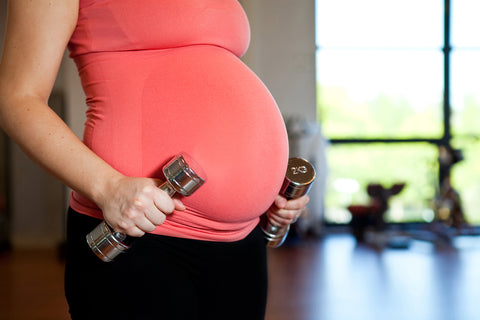Sandal Season Survival Series TIP #1: You Gotta Have Sole

When getting to the bottom of finding the right sandals for summer, you always want to pay very close attention to the soles. A sole-ful sandal is a safer sandal that provides you with the proper cushioning, comfort, and support. Sandals that have a thicker sole (atleast ½ inch thick) are ideal. That means: Flip Flops BEWARE. Sure, they may be oh-so-convenient to slide on your feet and go on with your day, but no arch support and a flimsy sole can often make them a not-so-wise option. If you are ever unsure if you sandals are suitable for wearing, you should perform a flexion test and torsion test. Ladies, if height is what you crave, wedged sandals are best rather than heels. A wider base gives you greater support, balance, and comfort. Rubber or even cork are suitable sole materials that provide support. Cork is highly recommended as it can conform to the shape of your feet. So here's to fun- AND comfort- in the sun this summer!
Stay tuned for TIP #2!
Putting your best FEET forward,
SH
Pamper Scamper

Looking for the right salon to get those tootsies touched up for sandal season? Here are 9 rules we found that we think you should know....courtesy of elle.com!
Putting your best FEET forward,
SH
Not So Fun In The Sun

According to the American Cancer Society, skin cancer is the most common cancer found in the United States, with melanoma being the most dangerous form. But in your pursuit of having fun in the sun this summer, do you know what changes to spot to make sure your skin remains safe from head to toe? Check out these common signs of melanoma from A to Z....err E!
Asymmetry: Moles that are uniform in shape should give little cause for concern. However, a mole where one half is different from the other half could indicate melanoma.
Borders: Moles should have borders that are smooth and consistent. A lesion may be cancerous if you notice its borders being jagged and irregular.
Color: Always look for moles to be one solid color (typically brown or tan). Moles that are multi-colored or speckled are likely melanoma.
Diameter: Moles that are less than 6mm (1/4in)- the width of a pencil eraser- are usually harmless. However if they exceed 6mm, then you should suspect melanoma.
Elevation: Inspect if a lesion is flat or elevated. Lesions that are raised above the surface of the skin often appear in the occurrence of melanoma.
What the FOOT!?!: Have you heard of Hutchinson’s Sign? It is a linear mark of increased pigmentation indicating melanoma under the nail. It begins at the base of the nail and extends towards the tip of the nail. It is always a good to remove nail polish and examine nails to note any potential changes under your nails.

Other places to note melanoma of the foot: top of the foot, sole, and in between the toes.
If you suspect any changes in moles or lesions to your skin, report to your physician immediately! And remember, early detection is ALWAYS key, with any form of cancer. The sooner it can be diagnosed, the far better chance you have of recovery.
Putting your best FEET forward,
SH
THE MOTHERLOAD (Part 2): Preggers CAN Be Choosers

Just because a baby’s on board doesn’t mean your daily activities have to take a back seat. Whether you’re breakin’ a sweat, layin’ low, or steppin’ out for the evening, here are some tips on what to lookout for in the right shoes you can use for any mama-in-the-making!
SPORTY PREGGERS
A proper athletic shoe always does a (pregnant) body good for any type of workout. When on the quest for the proper shoe, you want to check for 3 things: 1) a rigid sole with shock absorption, 2) a wide toe box, and 3) arch support. A rigid sole with shock absorption protects your feet from forces caused from the added weight they have to support along with the forces and impact from the ground from walking and excessive activity. A wider toe box is essential to accommodate for the increased width and frequent swelling of the feet that may occur. Lax ligaments and reduced arches can also contribute to wider feet. Therefore, having ample arch support maintains the pregnant foot in a more ideal position for a successful workout. Remember, if your feet are in a their proper position, that means less stress for your ankles, knees, hips, and lower back!
CASUAL PREGGERS
As tempting as it may be, going barefoot is a no-go for any future mama. Sure, going shoeless may be comfortable when at home, but it makes your feet a target for debris that you may have the displeasure of stepping on. Anything that can pierce your feet can lead to injury or even infection, which during pregnancy is added (unnecessary) worry. Also, going barefoot provides no arch support, which for flatfeet puts added stress on the ankles, knees, hips, and lower back. Instead, always wear some type of house shoe- the thicker the sole the better. Remember, coverage is the key-that also means NO flip-flops/thongs…sorry! If you’re out-n-about, a great athletic shoe is always an option. However if you’re in the mood for something more laid back, clogs are nice options. They are backless (giving your feet the feeling of being free), but still provides coverage and support.
CLASSY PREGGERS
You’ve found the perfect outfit for that very special occasion and you’re thinking to yourself that nothing would set-off this outfit more than a swanky pair of heels, right!...Oh HEEL no! In terms of high heels, height is not your friend. Increased weight in the belly region makes for a change in gait and altered balance. Falling can hurt you and the child. However if you just have to have some elevation, shoes with a short wedged heel (~2in high) are a reasonable alternative. The wider sturdier heel provides better rearfoot and ankle support for better balance and walking.
Putting your best FEET forward,
SH
THE MOTHERLOAD (Part 1): Pregnancy Foot Facts Revealed

Are your pre-pregnancy kicks feeling a little too snug? Do you feel that your belly isn’t the only thing that has grown since you have become pregnant? Here are 3 reasons why you just might be right!
JUST RELAX(IN) (1st Trimester)
The falling of the arches in your feet during pregnancy are often the result of rising hormone levels. During the 1st trimester, the body sees a spike in the hormone relaxin. To help prepare the body for childbirth, relaxin widens the cervix and relaxes the pelvic ligaments. But did you know that relaxin also makes the ligaments in your feet more lax? That’s right! Lax ligaments in your feet cause your arches to collapse, and your feet to become flatter, wider, and longer. On average, the feet can become a ½ - 1 size longer during pregnancy, and often times never return to their original sizes once pregnancy has ended.
WEIGHT FOR IT… (2nd-3rd Trimester)
With the average pregnancy adding 30-40 pounds, the feet are often subject to undergoing some of the most radical of changes in the body. Increased weight gain- specifically in the belly region- redistributes a woman’s center of gravity, causing more stress on the inner knees & lower back which in turn, causes more stress on the medial parts of the feet. As a result, the arches of the feet collapse, causing the feet turn inward (pronate) when walking. Flatfeet with increased weight places added stress on the feet making achy feet and heel pain- ie plantar fasciitis- far more prevalent. In extreme cases, added weight during pregnancy can add extra layers of fat to the soles of the feet, creating issues with fitting shoes.
UNDER PRESSURE (2nd-3rd Trimester)
Swollen feet are a complaint that is all too common among women approaching motherhood. This is largely due to the fact that as a woman becomes pregnant, her uterus grows larger increasing the pressure on the veins/vessels that return blood from the legs & feet. The slowed blood circulation in the legs & feet results in increased fluid retention- hence the swollen feet. If not carefully monitored, a mother-to-be can be at risk of pregnancy induced hypertension (preeclampsia)- which if detected should be treated by your doctor immediately.
Stay tuned for Part 2 of The Motherload, where we go inside what features expecting mothers should look for when on the hunt for the right shoe!
Putting your best FEET forward,
SH
The Lowdown on Lou Gehrig's Disease

Known as the Iron Horse, Lou Gehrig was long viewed as an accomplished first basemen for the New York Yankees who most notably playing in 2130 consecutive games- spanning 13 years. But while he personified strength and endurance on the baseball diamond, it was with great irony that a figure of this magnitude would become the face and bring worldwide attention to such a debilitating condition. But: What exactly is Lou Gehrig’s Disease? you ask. Look no further!
What is it: Also known as Amyotrophic Lateral Sclerosis (ALS), it is a progressive neurodegenerative disease. What does that mean? It’s a condition that affects the nerves that extend from the brain and spinal cord. Those nerves control muscle movement/function and as they die off, cause muscles to weaken, eventually leading to complete muscle paralysis. ALS is currently 100% fatal typically 2-5 years after onset.
Who is most likely affected: Men are more prevalent than women by a ratio of 2:1. Military veterans are twice as susceptible as the general population.
Where does it strike: Commonly starts in the hands, but extends to the arms, legs and feet.
When does it occur: Individuals in their 40’s are at the highest risk.
Why does it occur: Despite continued research, the cause is not yet known.
What the foot!?!: Those with nerve degeneration of the legs and feet, loses the ability to properly lift and plant their feet when walking in a condition known as drop foot. The nerves and muscles no longer work in tandem and causes an outward swinging of the leg and feet showing an abnormal gait. Check out this video (courtesy of YouTube) showing a gait with drop foot vs. a normal gait
Like to learn more about ALS? check out!
Putting your best FEET forward,
SH
Hit the Road

Springtime means sunshine, flowers blooming, birds chirping, and the arrival of marathon season. But as you gear up for your treacherous trek, do your running shoes have what it takes to go the distance? We gotcha covered!

It’ll Be All Light
Any long distance runner should always look to wear running shoes that are lightweight in nature. Shoes that are less bulky means that your legs and feet are carrying less weight, which improves a runner’s endurance during extensive runs.
A Soft Landing
Great shock absorption in your midsole and heel will keep your feet primed and ready for running. The impact of your feet as your heel strikes and plants into the ground can be up to 3 times your body weight. Factor in up to 26.2 miles of running and your feet are subject to a serious pounding.
Law of A-Traction
A long-lasting outsole gives you the best opportunity to stay upright as you march to the finish line. The outsole provides traction against rough surfaces- like dirt and pavement- to prevent cases of slip and fall. In addition, the outsole determines the flexibility of your running shoe. A proper outsole should allow your running shoe to bend ONLY at the ball of the foot.
Putting you best FEET forward,
SH
Show Me Your Sole
Hillary Clinton was delivering a speech at the Institute of Scrap Recycling Industries meeting today at the Mandalay Bay Hotel-Casino in Las Vegas when a disgruntled unidentified woman was taken into custody after hurling a shoe at the former US Secretary of State. Hillary WAS able to sidestep the oncoming “kick.”
What does shoe throwing mean, you ask?....
FOOT FACT:
Shoe throwing is an offensive gesture native to Middle Eastern culture. Simply put, your shoes touch all the filth on the ground. By throwing your shoe at someone, you are “throwing dirt at that person,” the ultimate sign of disrespect. To take it a step further, the poor often could not afford shoes, exposing their feet to the filth of the ground, while the wealthy wore shoes (protecting their feet from the dirt). Exposure to the dirt and filth signified a lack of class and intellect.
Putting you best FEET forward,
SH
Function vs Fashion
Visit NBCNews.com for breaking news, world news, and news about the economy
Check out these shoes you can use for all outdoor activities this Spring! Video courtesy of The Today Show.
Putting your best FEET forward,
SH





